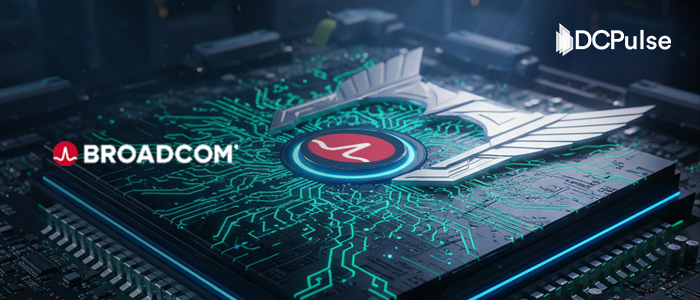Palo Alto, California, October 14, 2025- Broadcom announced its intent to launch Thor Ultra, a high-throughput networking chip designed for AI-scale data centres, deepening its ambitions to compete against Nvidia in the critical domain of interconnects.
Positioned to support “scale-out” architectures that connect vast numbers of AI accelerators, Thor Ultra functions as a network interface card (NIC) optimized for aggregating and routing data traffic across large clusters. The chip is rated at 800 Gbps Ethernet and offers full compliance with the Ultra Ethernet Consortium (UEC) standard.
Ram Velaga, Senior Vice President at Broadcom, emphasized the strategic importance of the networking layer in distributed AI systems. “In the distributed computing system, the network plays an extremely important role in building these large clusters,” he added, “So I’m not surprised that anybody who’s in the GPU business wants to make sure that they are participating in the networking.”
Velaga also said that engineers working on Thor Ultra have double the bandwidth compared to its predecessor and that reference system designs accompany the chip to help customers integrate it into their infrastructure.
Broadcom’s announcement comes on the heels of its recently unveiled agreement to supply custom AI chips to OpenAI, a deal covering 10 gigawatts of capacity beginning in late 2026. That agreement underscores the company’s expanding presence beyond computing into networking.
Analysts view Thor Ultra as a calculated play to challenge Nvidia’s grip on AI interconnects. Nvidia’s dominance in GPUs and related networking has long set a high bar, but Broadcom appears to be betting that openness, compliance with industry standards, and flexibility will give it an inroad.
Beyond raw bandwidth, Thor Ultra’s differentiators include advanced RDMA features, multipathing, and mechanisms to reduce congestion through selective retransmission and optimized packet routing. These capabilities aim to help data centres maintain performance at scale while mitigating latency and bottlenecks.
Yet the challenge is steep. The networking layer is unforgiving: integration with existing fabrics, compatibility, thermal and power constraints, and operational stability all matter immensely. Broadcom will need to prove not just that Thor Ultra is viable, but that it can reliably handle real-world loads.
Still, the timing aligns with broader industry currents. With AI workloads ballooning and demand for scale-out, high-performance fabrics rising, Broadcom is positioning itself not just as a GPU partner but as a holistic infrastructure player. Whether Thor Ultra becomes a mainstay in hyperscale AI fleets will depend on adoption momentum, but today’s announcement clearly stakes a bold claim in the AI networking race.


.jpg)
.jpg)
.jpg)